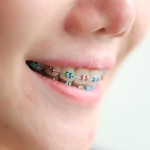
Fixed appliance orthodontic treatment employs two broad treatment approaches; extraction which is normally used for moderated to severs crowding and/or to alleviate or dentoalveolar protrusion; and non-extraction which is used for minor skeletal and moderate dental discrepancies. The choice between these two approaches can be influenced by training, treatment philosophy and is the subject of some debate.
The aim of this review was to assess the effect of systematic extraction protocols during orthodontic fixed appliance treatment on the soft tissue profile of human patients.
Methods
Searches were conducted in the PubMed, Cochrane Library, Embase, Virtual Health Library, Scopus, ISI Web of Knowledge and clinical trials.gov databases. Parallel randomised clinical trials and prospective/retrospective non-randomised controlled cohort studies on human patients assessing the effect of orthodontic treatment with fixed appliances and any kind of systematic extraction protocol on the soft tissue profile were considered.
A single reviewer selected studies which were checked by two independent reviewers. Risk of bias in the randomised and non-randomised studies was assessed using the Cochrane tool and the Downs and Black tool. The primary outcome was the sagittal position of the lower lip, measured cephalometrically with its distance from the E plane (LL–EL). Secondary outcomes included the distance of the upper lip from the E plane (UL–LL), the nasolagiabial angle (NLA), and the soft-tissue-profile convexity angle excluding the nose (SPC; measured as soft nasion–subnasale–soft pogonion) together with the patient-relevant outcome of aesthetic profile assessment by a panel.
Random-effects meta-analyses of mean differences (MD) or standardised mean differences (SMD) and their 95% CIs were performed, followed by subgroup, meta-regression, and sensitivity analyses.
Results
- 52 studies involving a total of 1876 patients were included; 1 RCT, 2 prospective non-randomised studies the remainder being nonrandomized studies of unclear or retrospective design.
- All 52 studies were at high risk of bias.
- Results indicated that extraction treatment was associated with an additional retraction of the lower lip from the E plane by 1.9mm (95%CI; 1.2–2.6mm).
- In assessing facial aesthetics there were noticeable differences between dentists and lay assessors.
- Overall the quality of the evidence was assessed as very low quality using the GRADE process.
Conclusions
The authors concluded: –
fixed appliance treatment with tooth extractions might be associated with differences in the soft tissue profile compared to non-extraction treatment, the extent of which are dependent on patient age, extraction protocol, and treatment-associated retraction of the upper incisors. However, existing studies report heterogenous results and no consistent predictions of profile response can be made. The current evidence base is based on retrospective clinical studies of potentially compromised internal validity as a result of their study design, methodological issues, incomplete reporting, and limited sample.
Comments
The authors here have undertaken a thorough search for evidence to answer this question. Unfortunately, the quality of the evidence that they have identified is very low. Only one randomised controlled trial was identified and this ,at best ,can only be described as a quasi-randomised study. With the exception of 2 non-randomised prospective studies the remainder (49) studies are retrospective an at high risk of bias with the authors noting a number of issues with these studies including data dredging or multiple testing, baseline confounding, and incomplete reporting. In addition, despite the large number of studies the overall patients small is small.
Despite the very limited quality of the included studies the authors have chosen to undertake a several meta-analyses. However, given the quality of the original studies and the high potential for bias these findings should be viewed very cautiously. As the review authors note well conducted and reported high quality studies are needed.
Links
Primary Paper
Konstantonis D, Vasileiou D, Papageorgiou SN, Eliades T. Soft tissue changes following extraction vs. nonextraction orthodontic fixed appliance treatment: asystematic review and meta-analysis. Eur J Oral Sci. 2018 Feb 26. doi:10.1111/eos.12409. [Epub ahead of print] Review. PubMed PMID: 29480521.
Other references
Original review protocol on PROSPERO
Kevin O’Brien blog – To extract or not: The orthodontist’s endless dilemma?
